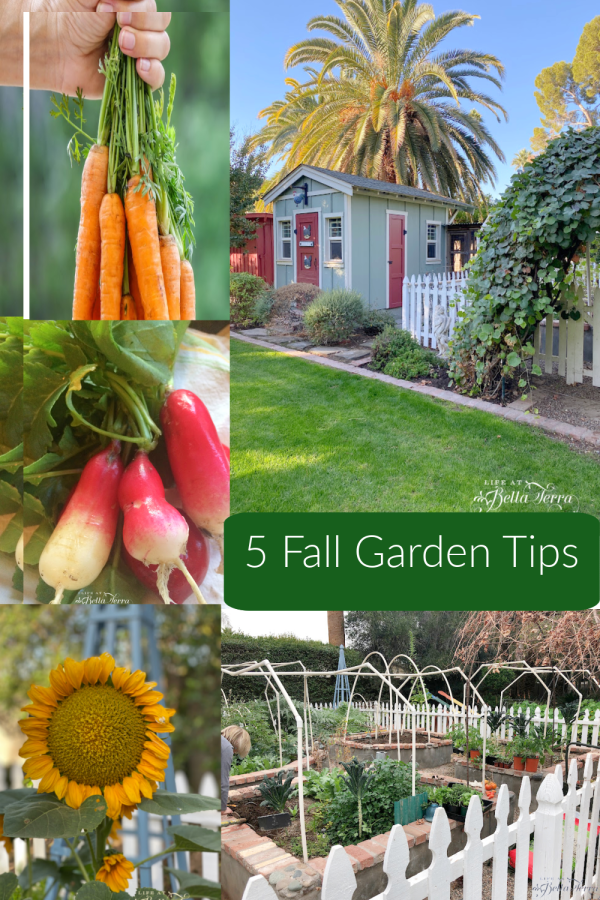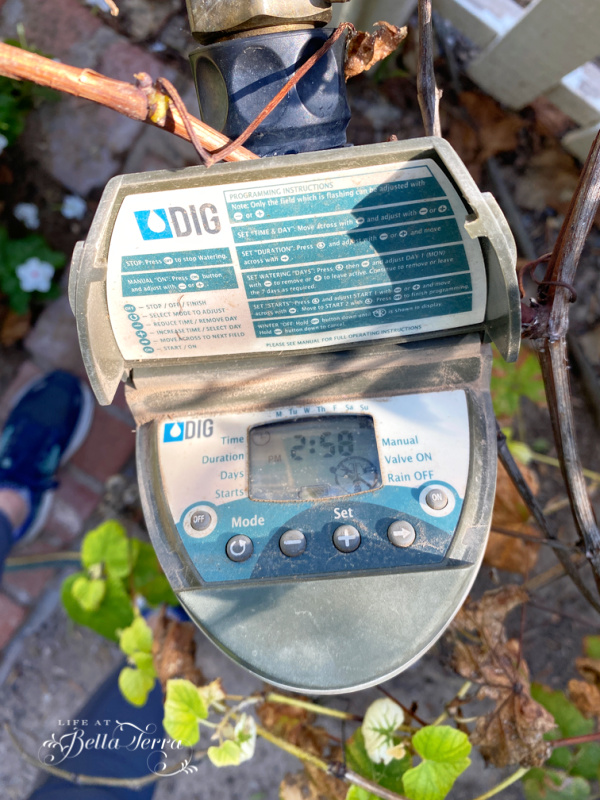5 Fall Garden Preparation and Planting Tips for the Southwest Region
In many parts of the country, gardeners are preparing their gardens for a long winter’s rest. However, garden preparation and planting is just starting for the Fall and Winter here in the Southwest. Here are 5 Fall gardening tips for you to prepare and plant your garden.
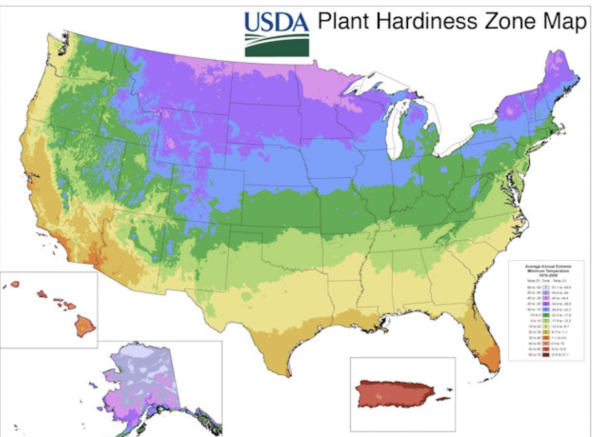
In this part of Arizona, our USDA Plant Hardiness Zone is 9b. The USDA Plant Hardiness Zone Map is the standard by which gardeners and growers can determine which plants are most likely to thrive at a location. The map is based on the average annual minimum winter temperature, divided into 10-degree F zones. If you don’t know your zone, you can enter your zip code here and find out.
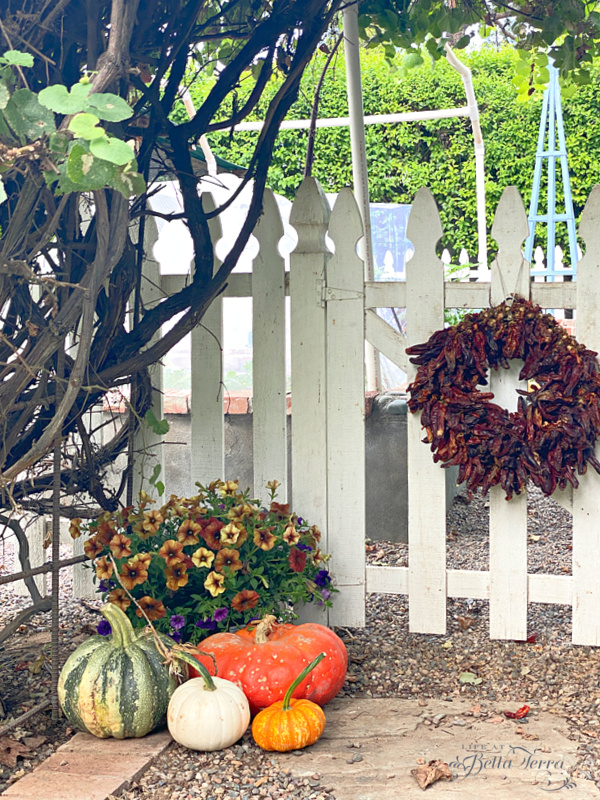
Most of the nurseries have a good selection of plants in October, so now is the perfect time to get your garden beds prepped and ready for the bulk of your planting.
Garden Design
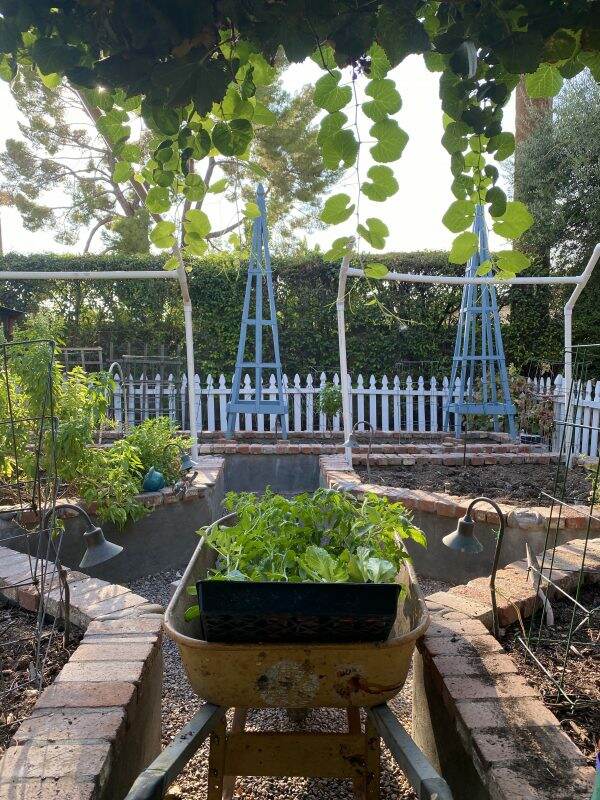
If you are unfamiliar with my garden, it is located in the western part of our 2 acre property. Surrounded by a picket fence, it is adjacent to the hen house. Rough garden size estimates are 18 feet by 24 feet. The location is purposeful, because the chickens often feed on garden leftovers.
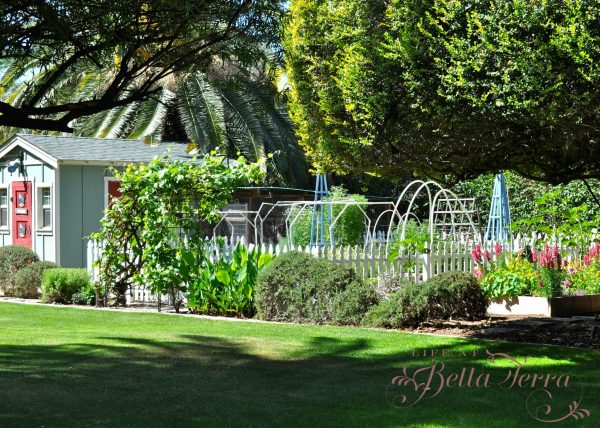
The garden has 5 raised beds, four of which are square (6 feet) and one that is a long rectangle (17 feet x 4 feet).
1) Preparing the Beds
Before I improve the soil of the beds, I remove all the “past their prime” plants. This season I will pull the rangy watermelon, zucchini and tomato plants, that will not thrive well into the next season. Shade cloth, used to protect the plants from the scorching summer sun, is removed and stored for next year. With the beds clear, I am ready to tackle the soil.
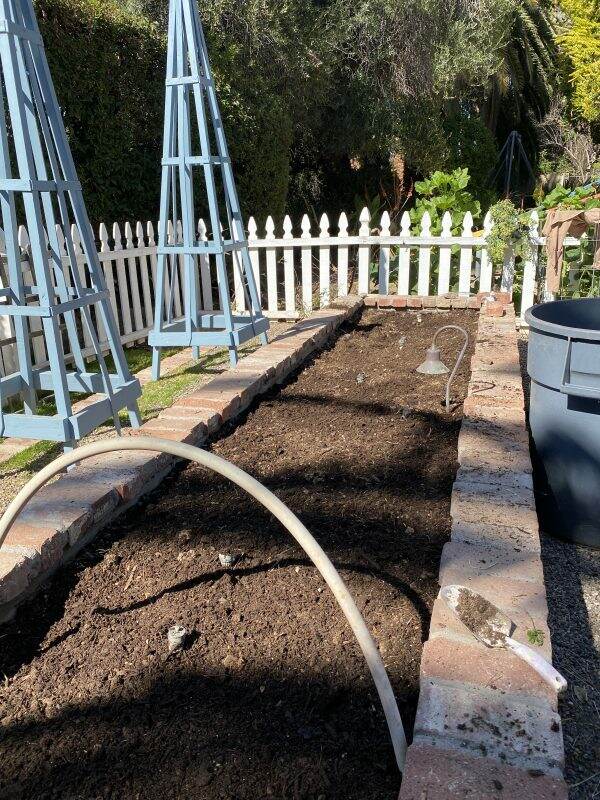
As you know, it takes 3 elements in order to grow plants~soil (no hydroponics here!), water and light. After each planting season, I amend the soil with our own compost. You have probably heard me extol the virtues of composting, but I love that we recycle our waste into beautiful, rich soil. To read more about composting, click here.
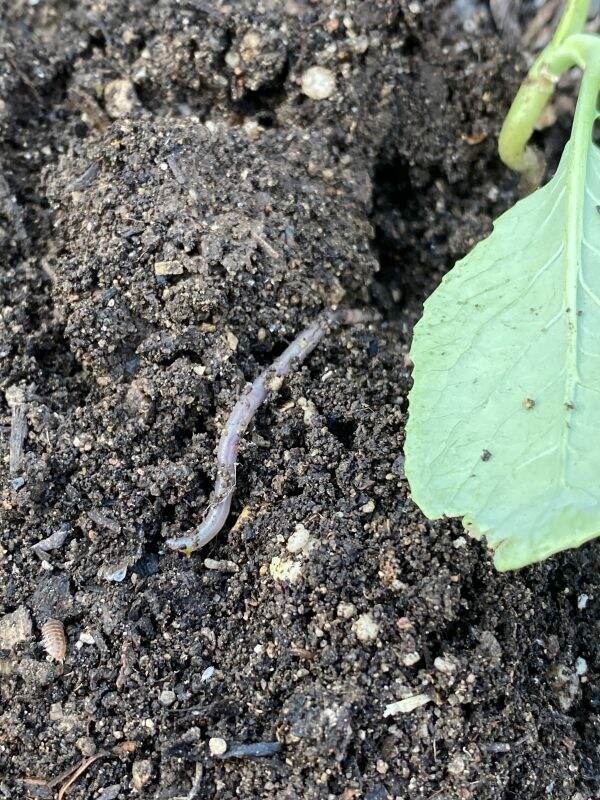
If you do not know the condition of your soil, there are soil testing kits readily available online for a reasonable price. Last year was the first time I purchased one and it is so informative to find out what your soil is lacking. With results in hand, I visit my local (and favorite) nursery, Whitfill Nursery and ask for help interpreting what my soil needs.
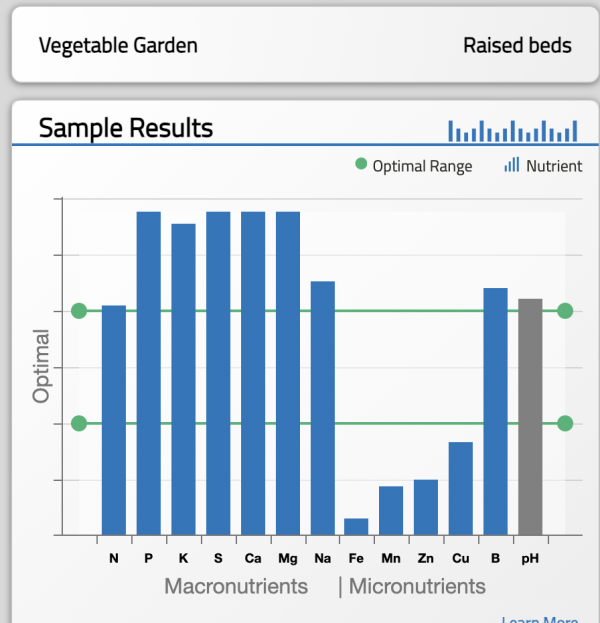
Based on the above test, you can see I am low on iron, maganese, zinc and copper. I do not replace all the soil in the raised bed, but add a nourishing layer to the top.
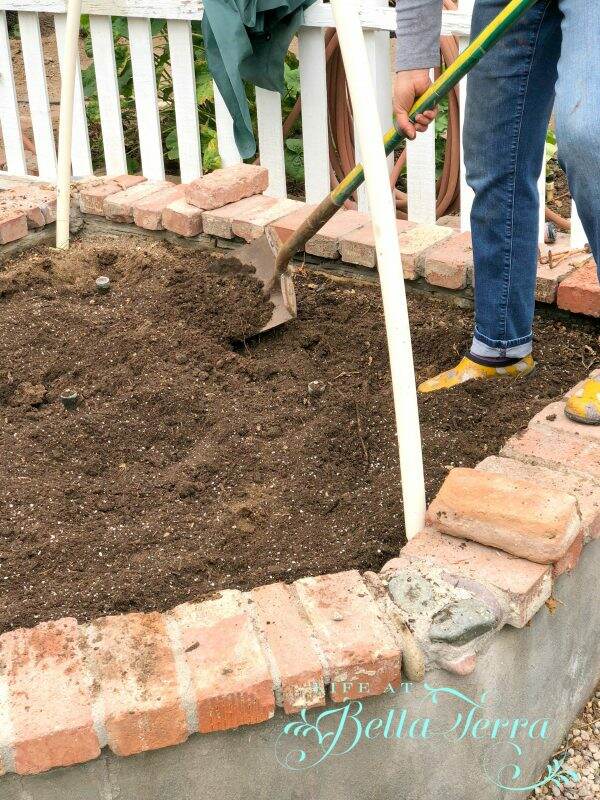
It will be interesting to see how my compost will stack up to this year’s soil test. Once you mail in the sample, results arrive via email a week later.
2) Check your Watering System
We do not water by hand, but rely on an automatic watering system. In the fall, we can still have some hotter days, so watering is key to plant survival.
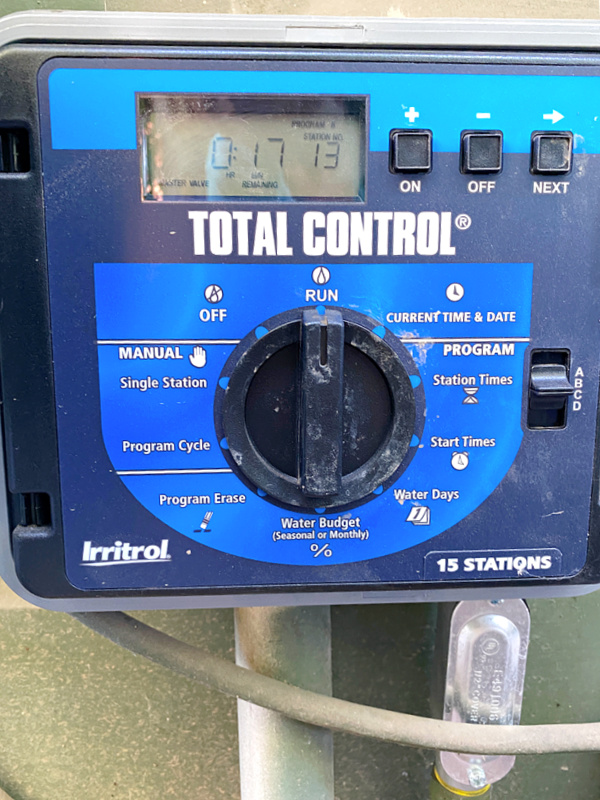
Last year we had one raised bed that received too much water and the soil smelled dank and foul. Since the leak was under the surface of the soil, it wasn’t until much later that we discovered the problem. The benefit of automatic watering systems is that you can adjust water volumes when the weather gets cooler or after a significant rain.
A daily inspection of your garden beds is worth it so you can troubleshoot any problems early.
If you do not have a plumbed, automatic landscaping watering system, we also use this DIG battery powered hose end timer. With easy programming and 4 start times, you can water your garden with your hose alone. This is a great, affordable alternative to make watering easier. You can find it here.
3) Overall Garden Maintenance
I love a visually beautiful garden but like everything else in life, things look tired or need repair. This year, I must give some love to the white picket fence. It needs painting and some of the posts are showing signs of rot. This fence has been protecting the garden for years, so it’s time to spruce it up again.
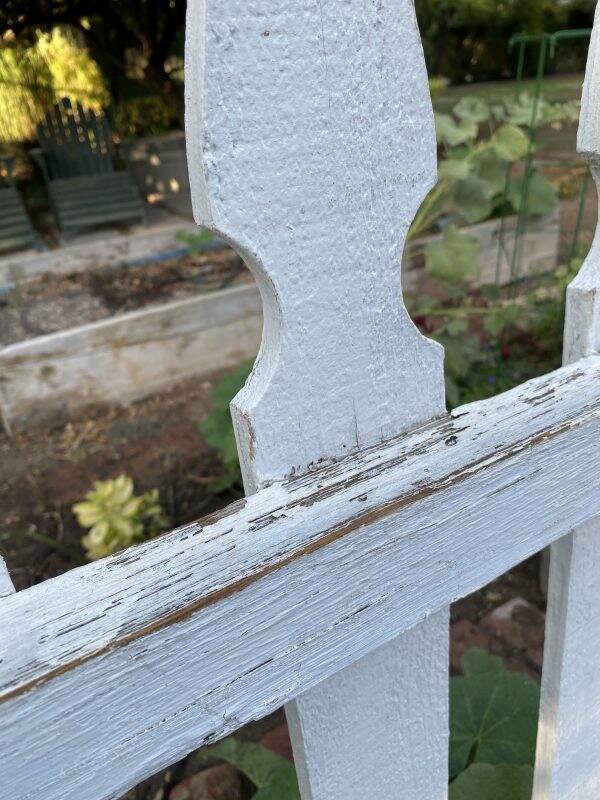
In the center of the garden is a small fountain that needs a good scrub and clean.
The chili pepper wreath on the gate is pretty chewed up from the birds. Debating what to replace it with, but I like the idea of a seed wreath or something edible to the birds.
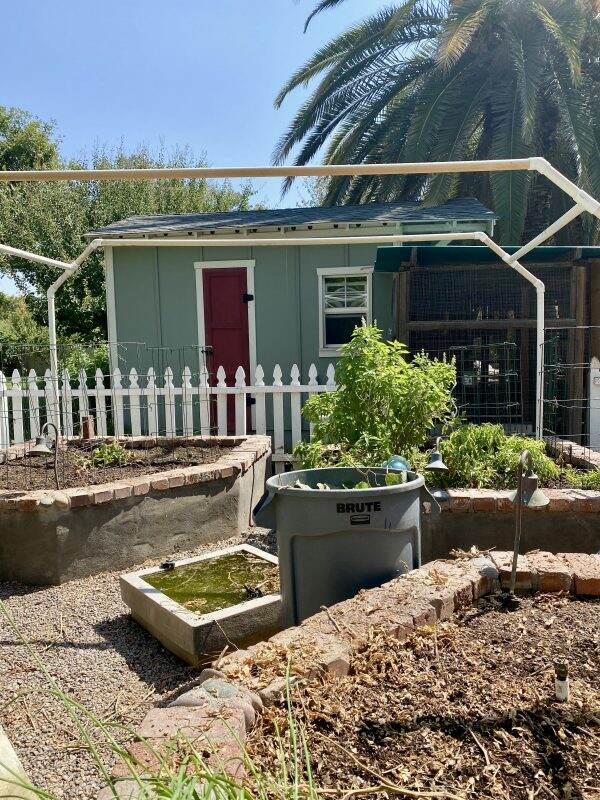
Pea gravel paths surround the beds and make navigating the garden easy. I love the sound of gravel crunching as I work in the garden. Clearing the paths and making sure there are no bare spots, will improve the overall look of the garden.
4) What to Plant
I recently posted the need in Arizona to plant more things to help the Monarch Butterfly population. I hope to use the ground bed near the further picket fence for all things bee and butterfly friendly. Here’s a short list of what the Monarch butterfly loves:
- Arizona milkweed
- Desert milkweed
- Sweetbush
- Desert marigolds
- Yarrow
- Pink Fairy Flowers
- Common sunflowers
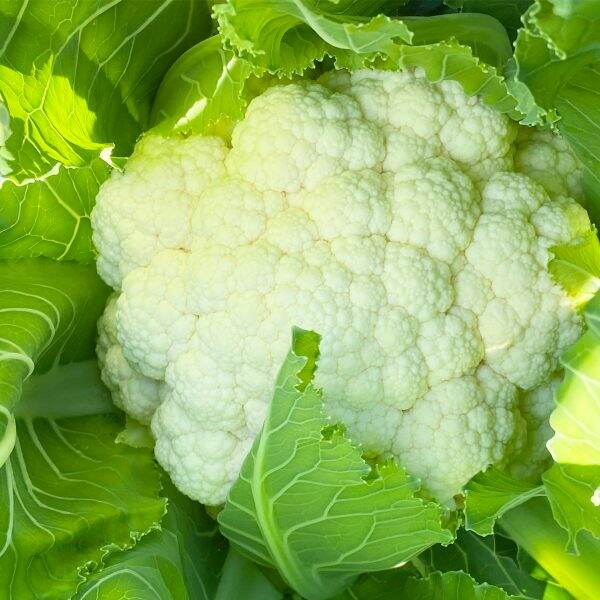
I have good success with vegetables in the fall. Here is my short list:
- Tomatoes
- Cauliflower
- Broccoli
- Carrots
- Radishes
- Beets
- Lettuce, Kale, Swiss Chard, collards, Spinach
- Brussels Sprouts
- Cabbage
- Leeks
- Snap or Snow Peas
- Kitchen Herbs~parsley, sage, thyme, rosemary

I swear by my Vegetable/Flower/Herb Planting Guide for the Valley of the Sun. It lists the plant, time to harvest, what month to plant and whether to use seed or starter plants. This guide is not available online and I believe my copy came from my classes as a Master Gardener. If you would like a copy, please email me at [email protected] and I will share.
5) Plant Supports
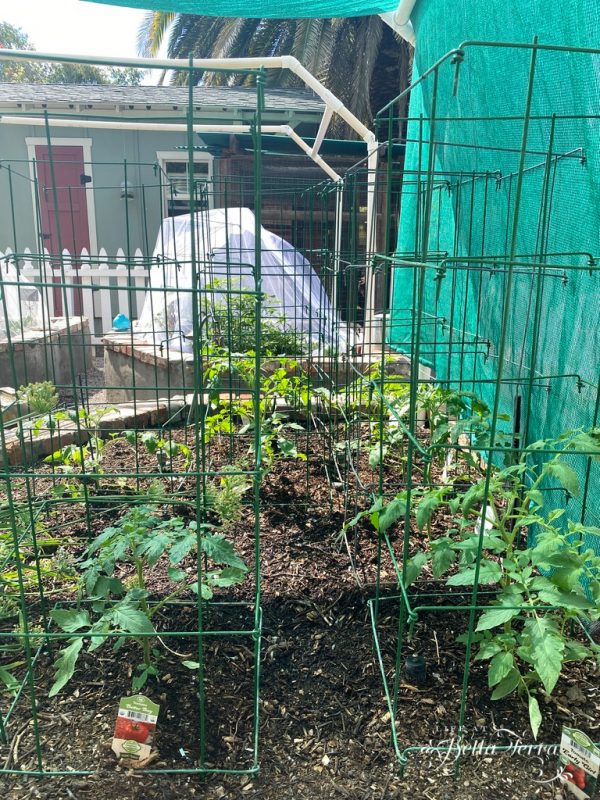
It is almost impossible to add plant supports after the plant is fully grown. I check the condition of my tomato cages to make sure they are not bent or damaged. But these tomato cages from Burpee are of a good quality and have lasted a long time. You can find other cages on Amazon here, but I haven’t tried any of those.
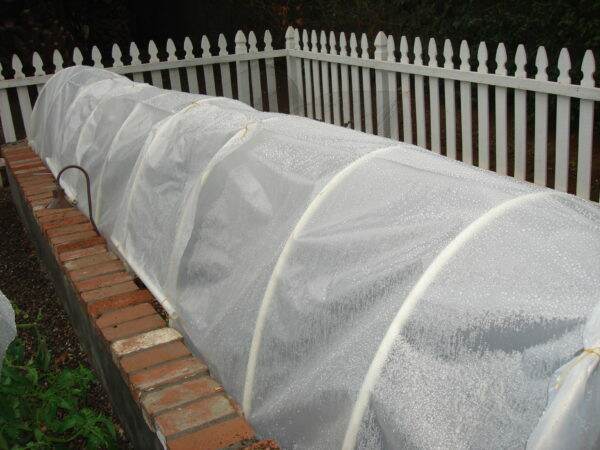
You probably notice the PVC white pipes in the garden. These flexible pipes bend over the beds and can be used to add netting, shade or frost cloth. We will get the occasional frost week in January/February so frost cloth and Christmas lights inside has saved many plants.
I am so excited to start the Fall Garden. There is such joy in having dirt under my nails and watching things grow. If you haven’t done any gardening, I hope this encourages you to start with something small, perhaps a few containers of flowers or vegetables or herbs. If you live locally, I am always excited to meet other gardeners so please reach out.
Happiest of Wednesdays to you! Thank you for tuning in today.

If you enjoy this post, please share on Pinterest.
